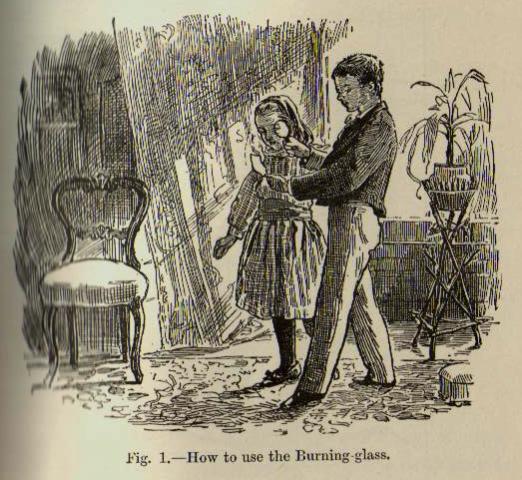Suppose that you were able to endure
any degree of heat, and that you had some way of setting out on
a voyage to the sun. Take with you a wax candle, a leaden
bullet, a penny, a poker, and a flint. Soon after you have
started you find the warmth from the sun increasing, and the
candle begins to get soft and melt away. Still, on you go,
and you notice that the leaden bullet gets hotter and hotter,
until it becomes too hot to touch, and upwards the temperature
continues to move, until at last the lead has melted, as the was
had previously done. However, you are still a very long
way from the sun, and you have the penny, the poker, and the
flint remaining. As you approach closer to the luminary
the heat is ever increasing, and at last you notice that the
penny is beginning to get red-hot; go still nearer, and it
melts away, and follows the example of the bullet and the
candle. If you still press onwards, you find that the iron
poker, which was red-hot when the penny melted, begins to get
brighter and brighter, till at last it is brilliantsly white,
and becomes so dazzling that you can hardly bear to look at it;
then melting commences, and the poker is changed into a liquid
like the penny, the lead, and the wax. Yet a little nearer
you may carry the flint, which is now glowing with the same
fervour which fused the poker, but at last the flint too will
have melted.
You will ask, how do we learn all
this? for as nobody could ever make such a journey, how
can we feel certain that the sun is so excessively hot? I
know that what I say is true for various reasons, but I will
only mention one, which is derived from an experiment with the
burning glass, that most boys have often tried.

We may use one of those large lenses
that are intended for magnifying photographs. But almost
any kind of lens will do, except it be too flat, as those in
spectacles generally are. On a fine sunny day in the
summer, you turn the burning glass to the sun, and by holding a
piece of paper at the proper distance a bright spot will be
obtained (Fig.1). At that spot there is intense heat, by
which a match can be lighted, gunpowder exploded, or the paper
itself kindled.
*
from
Star-Land, being talks with young people about the wonders of the
heavens, by Sir Robert Stawell Ball, Royal Astronomer of
Ireland, Cassell & Co,1890
("It
has long been the custom at the Royal Institution of Great Britain
to provide each Christmastide a course of Lectures specially
addressed to a juvenile audience")